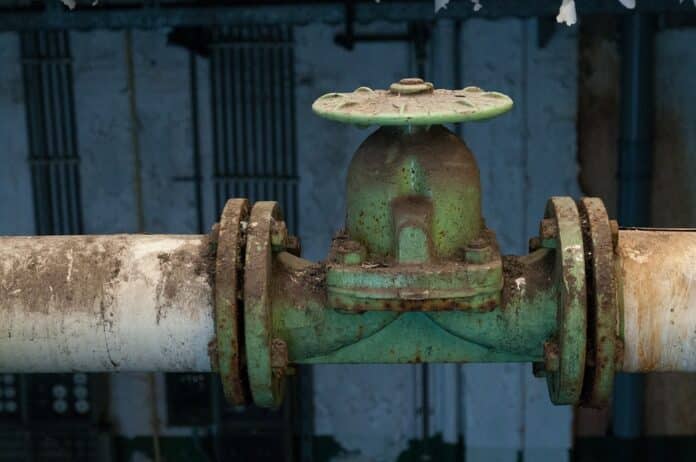Alan Schaffer with Cardno Engineering presented to the Brooksville City Council on Monday Oct. 7, 2019 explaining Phase IV of the Sewer Rehabilitation Project. Portions of the city’s sanitary waste lines were constructed as early as 1928 with continued expansion between 1958 and 1968.
Schaffer commented with a somewhat bemused tone, “Actually the older systems back in ‘28 are in better shape than newer systems back from… ‘58 to’68.”
The most recent project focused on refreshing the sewers, of which this is the fourth phase, began in 2004. The intention of the project is to assess and repair the underground pipes, manholes, and connection points. The assessment portion of the project consisted of smoke testing followed by video observation. Up to the writing of this article, roughly 52 miles of pipelines have been examined via CCTV video recording.
“We have um, assessed the pipelines in a method that would categorize the worst defects to the best defect… if there is such a thing as a best defect,” Schafer stated.
One of the main focuses of the project is to prevent the overworking of sewage treatment facilities by reducing inflow from storm runoff and infiltration from ground water. This will lower the cost of operations and reduce system strain. Additionally, if left untreated, the greater water volume could cause sewage to backflow up past the manhole covers into the street. Sources of water inflow and infiltration include cracks in pipes, faulty manhole covers, and connection points to homes. Reasons to correct the inflow and infiltration problem is to reduce the amount of water flowing through waste-water treatment facilities.
“In the city… most of our I&I is caused by rainfall, we have very clay soils and the water doesn’t percolate… sideways in many areas and water finds its way into these pipes,” commented Schaffer.
Phase III of the project ended with roughly 80 percent of Brooksville’s sewer system having been video inspected and roughly 30 percent of Brooksville’s sewers having been repaired. This phase cost approximately $2,500,000 with some cost reduction coming from the city of Brooksville acting as the contractor and using Cardno Engineering to manage the project. This decision allowed the city to focus on their own bottom line and maximize value.
The repair method used for the four foot sewer mains is the installation of cured in place structural fiberglass pipes into the existing clay pipes. The Cured In Place Pipe (CIPP) has an expected lifespan of 50 years. Additionally, several manholes were updated and repaired as well as many smaller sewage lines which received similar treatment. Some point excavation was necessary; however, Cardno took measures to limit the use of excavation to only the absolutely necessary locations. At locations where it was less costly than excavation, and the pipe diameter was too small for the continuous liner, sectional liners were used. Additionally, cleanout fittings were added to residences to aid the city in rapidly determining if the problem is on the city’s end or the homeowner’s. GPS was used during phase III to locate 731 manholes. This data was used to update the GIS mapping of Brooksville’s sewers. The cost per foot of pipe repaired was $50, $56 including cost of project management.
“So when the bids were done; we had five bid groups and then each of them had a ‘not to exceed’ dollar amount… There was a long list of pay items that pay was already determined through the bid process and the contractor got paid for just what he used.”
Phase IV, when completed, will have inspected all of Brooksville’s sewer pipes and repaired the worst 50 percent. Proposed as part of the fourth phase 26,290 open trench and cured in place repairs will be made; 300 point excavation, lateral, and other repairs will be made; 380 cleanout fittings will be installed; and 95 manholes will be repaired. Phase IV is precisely targeted at the worst of the remaining defects by use of the video observations. Two prerequisite tasks exist. These tasks are to update the construction plans as they are more than five years old, and to obtain a construction loan or grant. The construction plan updates are also set to include segments with recent maintenance issues.
When Schafer asked for questions at the end of the presentation, Mayor William Kemerer asked, “…or did you video all the sewer lines in the city?”
Schafer responded, “Yes, we videoed all the sewer lines that were accessible.”
Kemerer interjected, “Accessible?”
Schaffer responded, “Because there might be a break in that manhole that we can’t get a camera through.”
“We’re going in and fixing all those point repairs, so that we can go in and video more, and then we’ll do a find and fix at that same time,” Schafer continued.
Mayor Kemerer asked for a work schedule, or a schedule predicting how long the areas will last without intervention.
Schaffer responded, “That would be a difficult thing to determine, we know it’s not going to get better on its own… if there’s no new construction in the area then it shouldn’t necessarily get much worse.”
As part of the consent agenda, the Sewer Rehabilitation Project, Phase IV task order passed 5-0.

